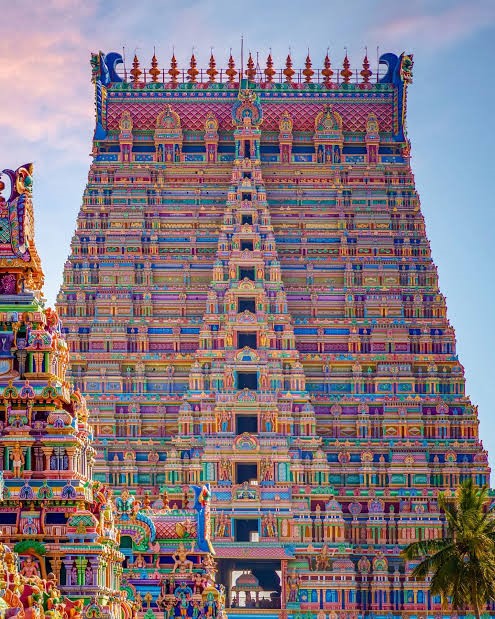Sri Ranganathaswamy Temple
Why in the News?
- Prominent Temple: The Sri Ranganathaswamy Temple in Srirangam, Tamil Nadu, is a renowned Hindu pilgrimage site.
- Unique Feature: Recognized as the largest functioning Hindu temple in India, spanning 156 acres.
- Historical Relevance: Revered as the foremost of the eight self-manifested shrines of Lord Vishnu.
Historical Significance
- Ancient Roots: Origins trace back to the 2nd century BC, with inscriptions dating to the 10th century CE.
- Royal Patronage: Developed under the Cholas, Pandiyas, Hoysalas, and Vijayanagar
Architectural Marvels
- Exquisite Design: Features 21 gopurams, including the 236-feet Rajagopura, India’s tallest temple tower.
- Key Highlights: A golden Vimana, a hall with 1000 intricately carved pillars, and vibrant sculptures.
- Sacred Pools: Includes nine sacred water bodies and 50 sub-shrines.
Cultural and Religious Importance
- Symbol of Faith: The temple is a central hub for Vaishnavism, hosting significant religious festivals.
- Architectural Legacy: A testament to Dravidian architectural brilliance, attracting devotees and tourists alike.
Dravidian Architecture
- Origin: Flourished in South India under Pallava, Chola, and Vijayanagara dynasties.
- Features: Pyramid-shaped vimanas (towers), large gopurams (entrance gateways), and spacious courtyards.
- Materials: Primarily used stone, with intricate carvings and sculptures.
- Famous Examples: Brihadeeswarar Temple (Thanjavur), Meenakshi Temple (Madurai).
- Cultural Significance: Represented religious devotion and showcased architectural and artistic excellence.
Sources Referred:
PIB, The Hindu, Indian Express, Hindustan Times




